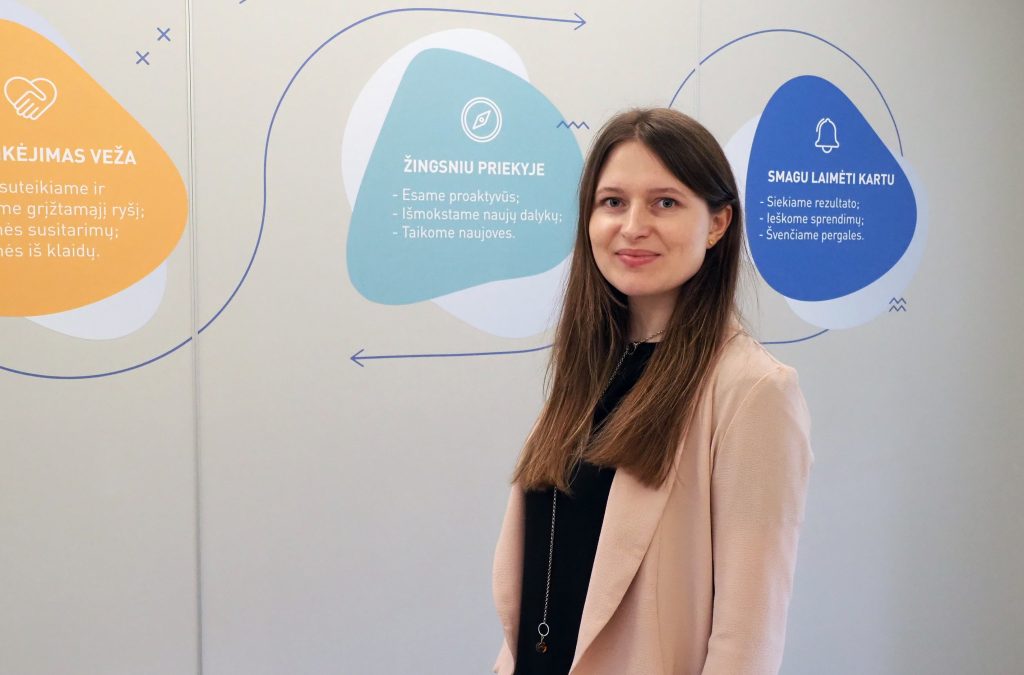Datalogic commerce developers: ‘IT infrastructure is part of business success

More than 15,000 orders from 30 countries around the world – that’s the daily statistics for Datalogic commerce, the solution for wholesale. But the work of the tool’s creators, the Lithuanian and Estonian company DLS OU, is not limited to customising the system for customers. Part of the team’s tasks also involve the IT infrastructure that ensures the uninterrupted operation of Datalogic commerce.
Big and local cloud providers on the scales
“Datalogic commerce can be provided on a SaaS or hybrid basis, depending on what the customer wants. However, for the developers of the system, it means the same thing – taking care of the IT infrastructure, wherever it is run from – from the cloud or from their own data centre. This makes DLS OU not exactly ordinary IT customers.
“When choosing IT partners, we look not only at price, but also at quality of service, location of servers, accessibility and other parameters. When we started looking for a new IT supplier, we also evaluated the offers of major cloud providers such as AWS, because they were technologically suitable for us,” says the company’s representative D. Budzinauskas.

Donatas Budzinauskas, Head of DLS OU Lithuania
However, several circumstances have forced these options to be put aside. “Firstly, the uncertainty about the regulation of data retention, and secondly, the potentially long response times to our requests. We needed to be able to deal with any issues that arose “here and now”, just by calling. This criterion prompted us to turn to the services of local cloud providers,” he says.
Experience has helped to separate the wheat from the chaff
DLS OU already has a lot of experience working with IT suppliers in the Lithuanian market, so it knew exactly what competences it was looking for.
“We were looking for an equal IT partner with deep domain knowledge, who could implement advanced and complex solutions, help us find a way to do certain things more easily, and finally – we wanted to manage resources quickly, rather than waiting for our request to go through a number of steps within the supplier’s team. In short, we wanted real flexibility and speed when we bought IaaS. The pricing of resources was also important – we wanted to pay for what we use,” says Budzinauskas, summarising that the company’s previous experience ultimately led it to turn to Blue Bridge’s cloud computing team.
Some risk always remains when transferring data
The DLS OU team was able to see whether the supplier was the right choice at the very beginning of the cooperation, when planning for the transfer of hundreds of gigabytes began.
“My recommendation to anyone preparing for a data migration is simple – prepare for the worst, hope for the best. When planning such a project, you need to think several steps ahead, have a plan B as well as a plan A. Even if your desired solution is not complex, the mundane things can be a challenge. There are always risks when migrating,” he says, noting that the most worrying aspect of the planning process was the downtime – the amount of time the system was down during the migration.
“When we calculated how much data we had and how long it might take to transfer it, we got a hair-trigger feeling that we might not be able to do it in one night. The migration scenarios developed by the Blue Bridge team solved a lot for us, and we were able to choose the most suitable one for us. After testing with the Blue Bridge team, we started the physical data migration. It took just a few hours – much less than we expected,” says Budzinauskas.
The possibility for the client to choose from several migration scenarios is a common process at Blue Bridge, says IT Services Manager Alesia Sapagova-Kutkienė: “The main goal is to take into account the individual needs of each client, the biggest risks and the potential downtime of the systems. By recommending several scenarios and selecting the most appropriate one together with the client, we ensure that not only the most secure scenario is chosen, but also the most beneficial one.”

Alesia Sapagova-Kutkienė, IT Services Manager, Blue Bridge

